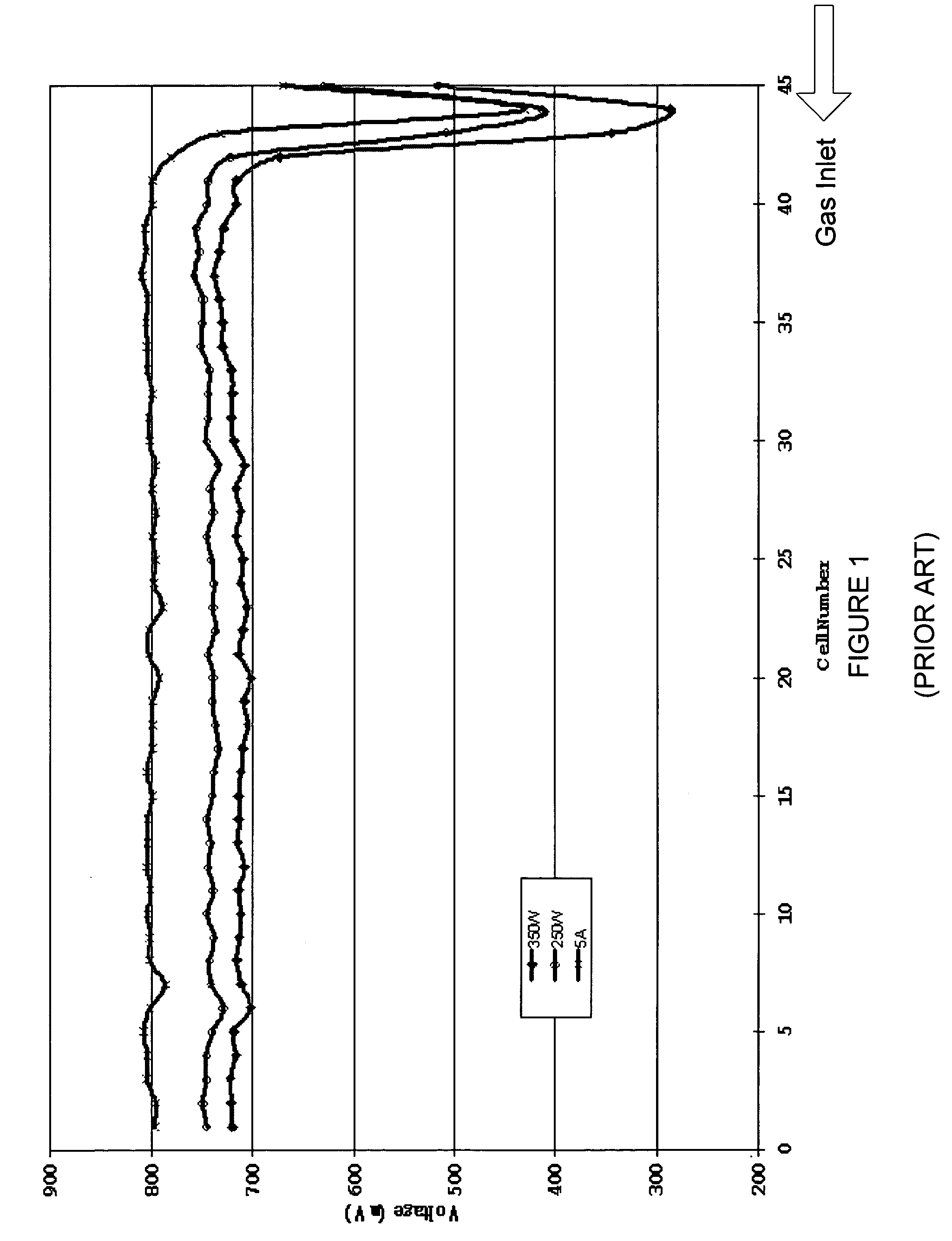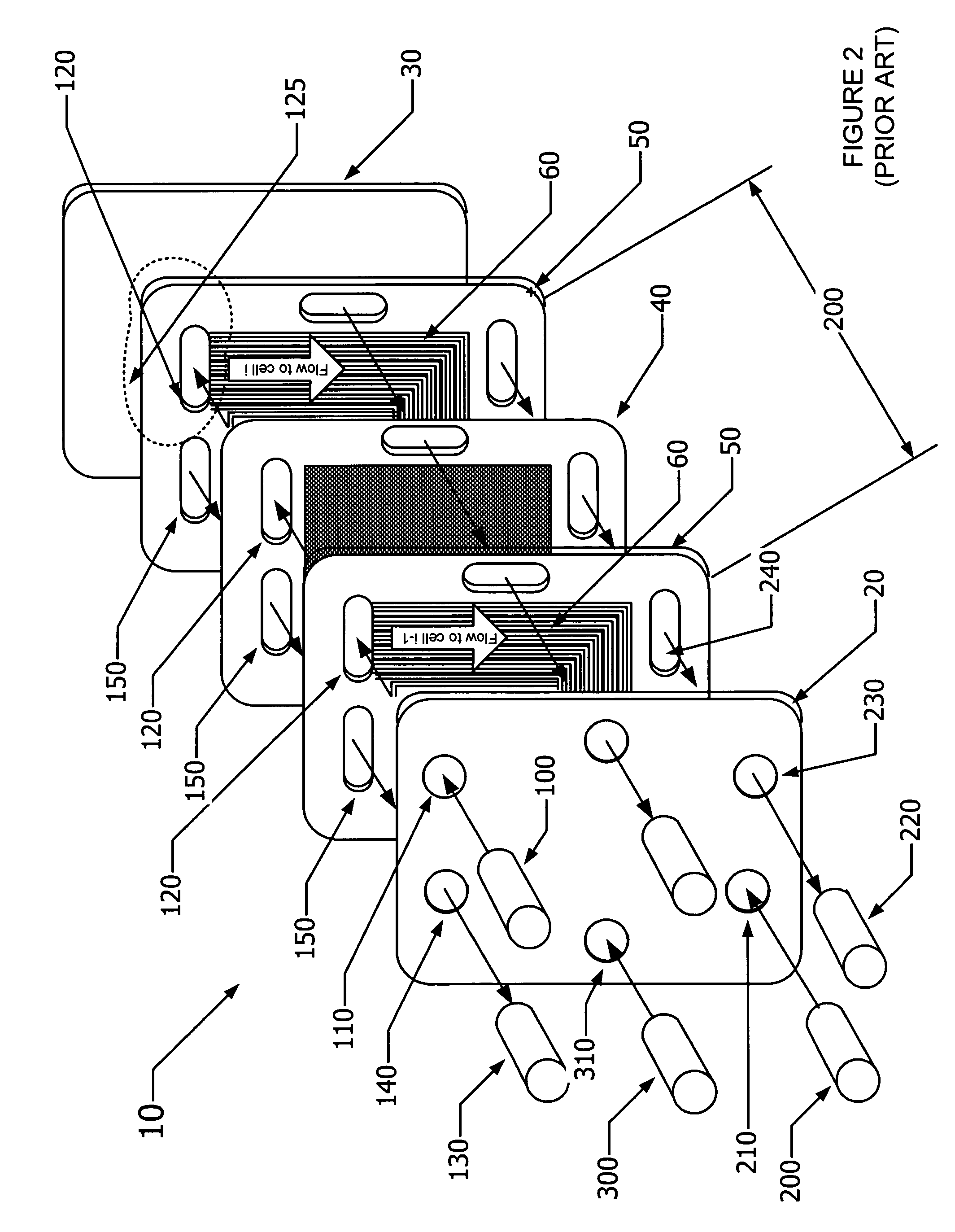Fuel cell stack with even distributing gas manifolds
- Summary
- Abstract
- Description
- Claims
- Application Information
AI Technical Summary
Benefits of technology
Problems solved by technology
Method used
Image
Examples
Embodiment Construction
[0031] Preferred embodiments of the present invention will be described in detail hereinafter with reference to the accompanying drawings FIG. 5 to FIG. 9.
[0032] Referring to FIG. 5, a fuel cell stack 10 is structured according to the present invention by stacking a plurality of unit cells 200 repeatedly between an end plate 20 and another end plate 30. As shown in FIG. 5, an assembly comprising of a membrane electrode assembly (MEA) and integrated GDL and gasket 40 is sandwiched between an anode plate and a cathode plate. On each plate there is a first manifold hole 110, which preferably has the same shape and size as the hole 110 on the end plate 20. The first manifold hole 110 receives and transports the gas supply from the external gas supplying line 100. By having the geometry of the manifold holes 110 on the plates match the holes 110 on the end plate 20, the change in gas flow pattern due to geometric variation between supplying line and manifold entrance will be eliminated ...
PUM
 Login to View More
Login to View More Abstract
Description
Claims
Application Information
 Login to View More
Login to View More - R&D
- Intellectual Property
- Life Sciences
- Materials
- Tech Scout
- Unparalleled Data Quality
- Higher Quality Content
- 60% Fewer Hallucinations
Browse by: Latest US Patents, China's latest patents, Technical Efficacy Thesaurus, Application Domain, Technology Topic, Popular Technical Reports.
© 2025 PatSnap. All rights reserved.Legal|Privacy policy|Modern Slavery Act Transparency Statement|Sitemap|About US| Contact US: help@patsnap.com



